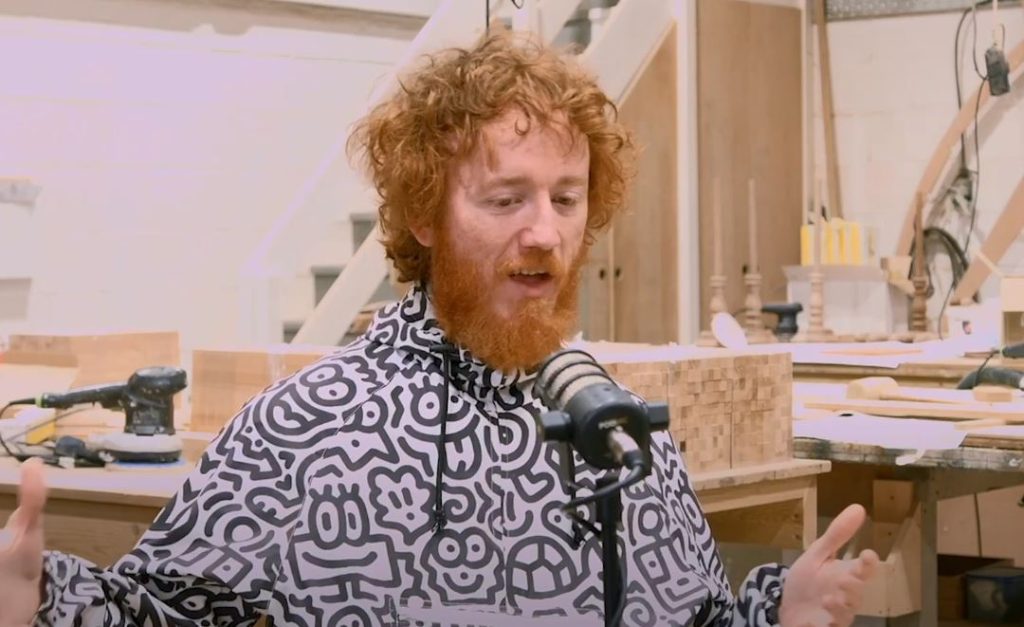Famously known as Mr. Doodle, Sam Cox has amassed a fortune that is both remarkably unconventional in origin and remarkably effective in scale. From modest beginnings, selling sketches on the street for a pound, he has painstakingly turned a lighthearted passion into a well-known, asset-rich brand. His estimated net worth, which includes both his art sales and his strategic mastery of brand positioning, is between £7 and £9 million by 2025.
His ascent over the last ten years is remarkably comparable to disruptive start-ups that use niche appeal to break into mainstream markets. Viral videos, interactive installations, and early exhibitions broadened his audience beyond the usual collectors. His sales trajectory has benefited greatly from the Asian and Middle Eastern markets in particular, where auction results frequently surpass projections by remarkable margins.
Mr Doodle – Bio & Career Snapshot
| Category | Details |
|---|---|
| Full Name | Sam Cox |
| Birth Year | 1993 or 1994 |
| Birthplace | Kent, England |
| Profession | Illustrator, Artist |
| Artistic Style | “Graffiti Spaghetti” – dense, monochrome doodles |
| Education | University of the West of England, Bristol |
| Active Years | 2014 – Present |
| Estimated Net Worth (2025) | £7–£9 million (Source) |
| Notable Achievements | Fifth-highest art auction sales globally (under 40, 2020) |
| Signature Project | Fully doodled £1.35M Kent mansion |
| Major Exhibitions | Mr Doodle! Museum Mayhem – Holburne Museum, Bath (2024) |
| Spouse | Alena |
In 2020, his work brought $4.7 million in auction sales in just nine months, which was a turning point. In addition to increasing his market credibility, this placed him in the top five artists under 40 worldwide and greatly allayed any remaining concerns about his long-term survival in the cutthroat art industry.
Converting every square inch of Cox’s £1.35 million Kent home into an immersive doodle environment was his most ambitious project, and it resulted in a very distinct brand statement. Millions of people watched the project’s accompanying time-lapse video, which further solidified his reputation as a dedicated, quirky, and unafraid original artist.
However, his narrative has an emotional component that is frequently missed in market research. He had a serious mental health crisis while working on the project, which he has talked candidly about in interviews. His recuperation, which included a gradual return to work, has significantly enhanced his relationship with collectors and fans alike, giving his business persona a more relatable aspect.
His sources of income are very diverse in terms of money. The majority of his yearly income, or almost 40%, comes from original artwork and private commissions. These include large, custom murals for affluent customers as well as tiny framed pieces. About 20% is made up of merchandise, which includes everything from home décor to clothing partnerships and provides fans with an incredibly low entry point. While extending his visual identity into popular culture, corporate partnerships such as those with Samsung, Fendi, and Disney offer extra revenue streams.
Mr. Doodle! Museum Mayhem, the Holburne Museum’s 2024 exhibition, was especially creative in transforming him from an internet curiosity to a significant institutional artist. In order to promote active engagement and further solidify his brand ethos—that art is for everyone, everywhere—visitors were encouraged to make their own doodles.
Social media continues to be a very effective marketing tool, acting as a link between casual fans and devoted collectors. His time-lapse films, behind-the-scenes looks, and introspective thoughts quietly increase demand while maintaining a devoted fan base. He has maintained more creative and financial control by using these platforms to drastically lessen his dependency on conventional gallery representation.
Mr. Doodle’s success shows how commercial success can coexist with authenticity, strategic storytelling, and unrelenting output in the larger context of contemporary art. His work is especially groundbreaking because it makes fine art accessible without sacrificing its uniqueness by refusing to separate it from popular culture.
Cox’s journey provides aspiring artists with a useful road map: establish a visual identity that is so instantly recognizable that it becomes inseparable from your name, create direct channels to your audience, and diversify your revenue streams without sacrificing your artistic integrity. His career demonstrates that even the most ambitious ideas can become a multimillion-pound, sustainable business when carried out with discipline and strategic foresight.


